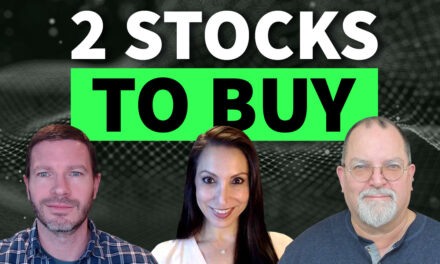Lately, I’ve been thinking a lot about The Bauman Letter’s Endless Income model subportfolio. It’s a group of stocks and preferred shares designed to provide above-average income yields.
It’s on my mind because of how it’s doing compared to my benchmark, the S&P 500.
Periodically, I review the performance of The Bauman Letter, Profit Switch and Clint Lee’s Flashpoint Fortunes. All three services deliver returns far ahead of our benchmark.
But when I exclude the income-oriented Endless Income picks from the calculations, the overall returns for The Bauman Letter jump by 20%.
That’s what I’d expect. The focus of income-producing assets in our model portfolio is dividends, not big price appreciation.
In fact, if your goal is to achieve steady income and long-term gains, rapid price escalation isn’t always a good thing. There’s something else you should be focusing on instead.
Which Yield Matters Most?
Three types of yield matter to most investors:
- Current yield.
- Forward yield.
- Yield on cost.
Yield on cost is the previous 12 months’ pay-out from a stock as a percentage of the price you paid for it. It’s far more important than current yield or forward yield.
That’s because yield on cost is a function of how much you pay for the stock in the first place. All else being equal, the less you pay for a stock, the higher your yield on cost will be.
Starting with a high yield on cost will give you better gains than a short-term focus on share price would suggest.
That’s why one of the core strategies I recommend to readers of my Bauman Letter is to take advantage of price dips to lower their average cost basis and increase their “yield on cost.”
Here’s a real-life example from the Invesco KBW High Dividend Yield Financial ETF (NYSE: KBWD):
Yield Type |
KBWD |
| Current yield: The value of all dividend payments received in the last 12 months divided by the current stock price. |
8.75% |
| Forward yield: The value of the next 12 months’ dividend payments, based on the most recent payment, divided by the current stock price. |
7.43% |
| Yield on cost: The value of all dividend payments received in the last 12 months divided by the price you paid for the stock. |
10.80% |
Notice that the forward yield is lower than the current yield. That means the exchange-traded fund (ETF) has reduced its dividend payment recently. The last 12 months’ worth of dividend payments are worth more than the next 12 months’.
But the striking thing is how much bigger the yield on cost is. It’s almost 35% higher than the forward yield.
If you had bought KBWD on April 3 last year, during the COVID-19 market pullback, you’d have paid $9.28 per share. As I write, shares are trading for $17.82. That’s why the yield on cost is so outstanding.
This illustrates my first point about income-producing assets: timing is everything.
The Power of Compounding Compels You
Of course, KBWD’s stock price appreciation of 76.1% since April 2 last year is great. The S&P 500 is up only 50% in that time.
But let’s assume you reinvested every one of KBWD’s juicy monthly dividends. That would put your total return at nearly 100%.
That’s the power of compounding at work. You’ve achieved 24% more gains than if you hadn’t reinvested those dividends.
Let’s make another assumption. Say you bought 1,000 shares of KBWD last April. Thanks to dividend reinvestment, you now own 85 more shares.
Each one of those 85 shares pays dividends … dividends that you can reinvest to buy new shares, generate more dividends, buy more shares, and so on.
The impact of compounding increases exponentially over time. Assuming KBWD’s dividend increases at 10% a year, over 10 years, you would achieve an average annual gain of 13.4%. But stretch that out to 20 years, and your average annual gain is over 110%. Every year, your annual gain grows exponentially.
Where to Find the Best Yields of All
One of the best places to find outstanding compounding-friendly yields is none other than The Bauman Letter’s Endless Income subportfolio.
Like The Bauman Letter itself, it’s a relatively young portfolio. Our very first trade was less than two years ago. Given that it’s an income-oriented portfolio, its total return over the brief period is still a little bit lower than our benchmark.
But I’ve loaded Endless Income with a powerful secret weapon that’s going to change that rapidly: real estate investment trusts, or REITs.
REITs are tax-favored investment vehicles that specialize in real estate or related assets, like mortgages. By law, they must distribute 90% of their potentially taxable income as dividends.
That means that they tend to pay higher yields than other assets.
And because the definition of real estate includes some of the hottest property in the world today — like advanced data centers, fiber-optic networks and last mile industrial delivery warehouses — those dividends are growing dramatically.
Three-year compound annual growth rates for my Endless Income picks range from 8% to an incredible 15%.
That’s why, if your goal is steady, compounding income reinvestment, the REITs in Endless Income are just a place to start. I’ll share more about these Endless Income REITS on Thursday. Stay tuned.
And since you’re a REIT investor, you don’t need to worry about collecting rent checks yourself!
Kind Regards,

Ted Bauman
Editor, The Bauman Letter









